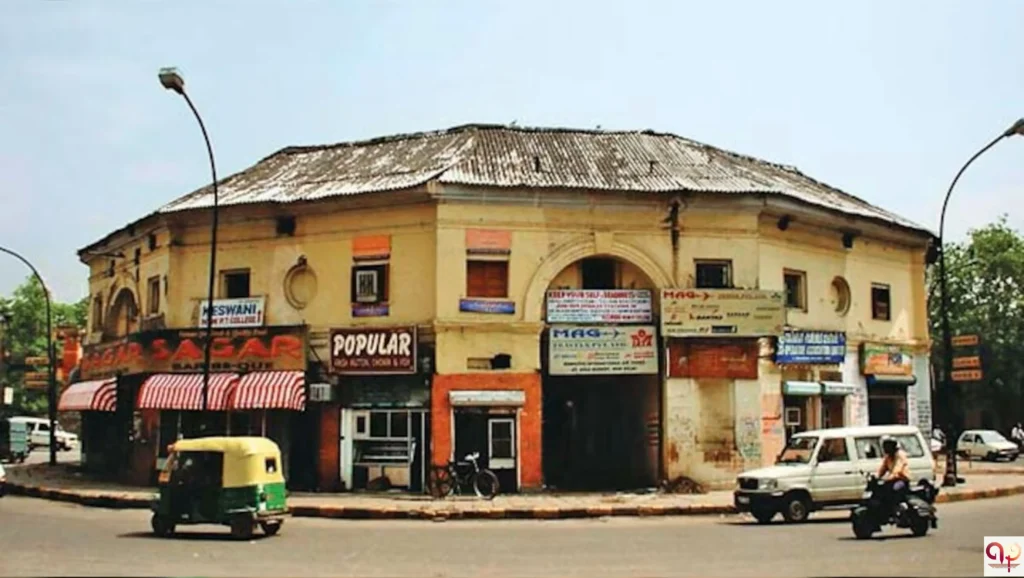NDMC to Restore 1921 Colonial Landmark into ‘Veerangana’ Museum; Commuters Urged to Avoid the Area
New Delhi — The iconic Gole Market, one of New Delhi’s earliest colonial-era landmarks, is undergoing a major conservation and adaptive reuse project by the New Delhi Municipal Council (NDMC). Beginning July 25, traffic restrictions have been enforced for a period of six months around the site to facilitate redevelopment work, which includes transforming the structure into the Veerangana Museum, set to open on August 15, 2025, coinciding with India’s 79th Independence Day.

Table of Contents
A Heritage Landmark in Transition
Commissioned in 1921, Gole Market was designed by Sir Edwin Lutyens, the chief architect behind the imperial city of New Delhi. The structure derives its name from its circular form (‘gole’ meaning round in Hindi) and was originally planned as part of the larger urban layout of Lutyens’ Delhi, reflecting classical symmetry and radial road planning. Located at the junction of major arteries like Bhai Veer Singh Marg, Shaheed Bhagat Singh Marg, Peshwa Road, and Ramakrishna Mission Marg, it played a central role in the planned civic and retail life of early New Delhi.
The market’s red sandstone facades, arched colonnades, and central rotunda reflect a blend of Indo-European architectural vocabulary common to the 1920s civic buildings. Over the decades, it evolved into a bustling marketplace for bakers, stationers, and tailors, but by the early 2000s, it suffered from severe neglect and structural damage.
In 2007, citing safety and heritage concerns, the NDMC decided to vacate and de-commercialize the structure. The plan was later reinforced by the Delhi High Court in 2009, leading to a halt in commercial activities and paving the way for conservation.
New Life as the ‘Veerangana’ Museum
Under the current initiative, NDMC will:
- Restore the original architecture and structural integrity of Gole Market
- Create a state-of-the-art museum space to honor the stories of Veeranganas (brave women warriors and freedom fighters)
- Construct supporting infrastructure, including a pedestrian subway and service block
- Landscape the surroundings and improve public amenities
The Delhi Urban Art Commission (DUAC) and INTACH (Indian National Trust for Art and Cultural Heritage) have previously reviewed design proposals and supported its adaptive reuse in line with heritage conservation standards.
This transformation is part of the “Smart City Mission” projects under the Ministry of Housing and Urban Affairs (MoHUA), aiming to balance urban modernization with cultural heritage.
“Gole Market holds immense historical and architectural value. The upcoming Veerangana Museum is envisioned to create a cultural node in the heart of Lutyens’ Delhi,” said an NDMC official in a recent release.
Traffic Advisory: Six-Month Restrictions and Alternate Routes
As part of the construction process, the Delhi Traffic Police has issued an advisory restricting vehicular movement between the Gole Market roundabout and Bhai Veer Singh Marg.
Recommended alternate routes include:
- From Shaheed Bhagat Singh Marg: Turn right at Gole Market towards Peshwa Road or R.K. Ashram Marg
- From Mandir Marg: Use Kali Bari Marg
- From R.K. Ashram Marg toward R/A GPO: Take Panchkuian Marg, Bangla Lane, or Peshwa Road
- Heavy Vehicles: Rerouted via Sheikh Mujibur Rahman Road and R/A Talkatora
Strict no-parking zones are in force around Gole Market and Udyan Marg. Unauthorized parking will result in towing and legal penalties.
The Delhi Transport Corporation (DTC) is assessing temporary changes in bus routes to minimize inconvenience to commuters.
Commuters heading toward IGI Airport, New Delhi Railway Station, and ISBT terminals are advised to plan ahead and use Delhi Metro and public transport wherever possible. Further diversions may be announced based on real-time construction progress.
Also Read: Yuge Yugeen Bharat Museum: Centre Invites Bids for Architectural Design of World’s Largest Museum
Government & Institutional Support
The redevelopment project is backed by:
- NDMC’s Heritage Conservation Plan
- MoHUA’s Smart Cities Mission
- Supervision from Delhi Urban Art Commission (DUAC)
- Advisory input from INTACH
Historical Significance
- Architect: Sir Edwin Lutyens
- Built: 1921
- Style: Indo-European colonial with classical proportions
- Function: Civic market center in British-planned Delhi
- Current Use: Closed for commercial use since 2009; under adaptive reuse as a museum
